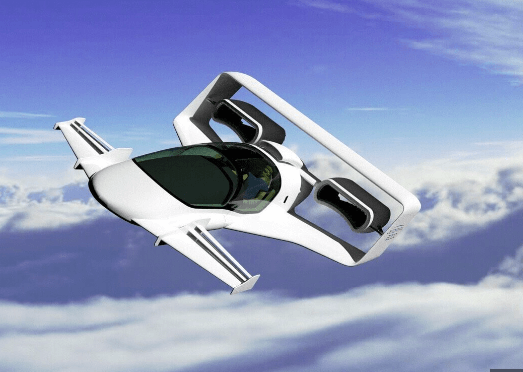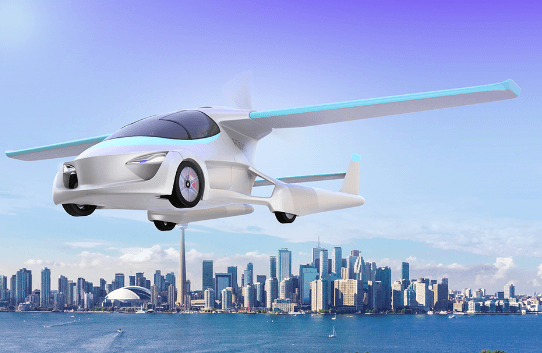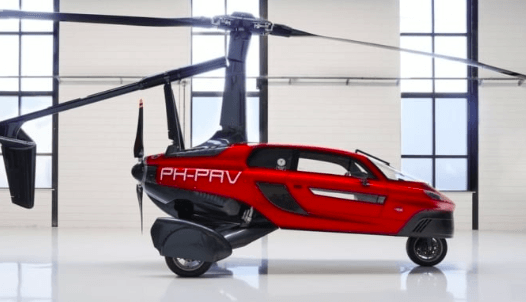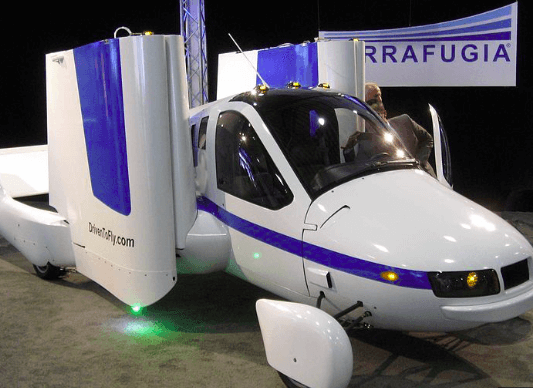
Are flying cars legal?
What exactly is a flying car? How are they created? Are flying cars legal?
A flying automobile is a sort of vehicle that can serve as both an aircraft and a car. They are also referred to as “roadable aircraft” or “transition aircraft”. They generally have wings and propulsion systems that let them to fly, as well as wheels and steering systems that enable them to drive on roads.
The design and production of flying automobiles is a difficult process that includes merging aviation and automobile technology
Some flying car prototypes use rotors or other forms of propulsion systems to take off and land vertically, similar to a helicopter.Other designs, generally utilising folding wings or retractable propulsion systems, may switch between flying and driving modes.
The manufacturing process of a flying automobile will be determined by the vehicle’s design and technology. The manufacturing process for a car that can fly using rotors, for example, would comprise designing and fabricating the car structure, installing the rotors, and integrating the control systems.
The manufacturing process for a car that can switch between flying and driving modes would comprise designing and creating the car chassis and wings, integrating the control systems, and engineering the mechanism that allows the wings to fold or retract.
It is important to note that flying vehicles are still at the prototype stage and are not yet widely accessible on the market, and their development and manufacture are still ongoing, with numerous problems including as safety, noise, and restrictions.
Where is it legal to drive a flying car? Are flying cars legal?

In most countries, flying vehicles are not yet widely accessible or authorized for usage on public highways or in airspace. Some firms, however, are creating flying automobiles and collaborating with governments to draft legislation and standards for their usage. The following are some locations where flying vehicles are being tested or have been granted authorization to operate:
The United Arab Emirates has declared intentions to create a flying taxi service in the near future utilizing autonomous aerial vehicles (AAVs), and has already begun testing these vehicles.
The Federal Aviation Administration (FAA) in the United States has formed a “Flying Car” Aviation Rulemaking Committee (ARC) to make recommendations for the certification and operation of flying automobiles.
Singapore’s Civil Aviation Authority (CAAS) has inked an agreement with Germany’s Volocopter to perform a feasibility study on urban air transportation, which includes the usage of flying automobiles.
In Europe, the European Union Aviation Safety Agency (EASA) has begun developing a legal framework for flying vehicles in order to prepare the way for urban air mobility growth.
It’s important to note that these are just a few instances, and because rules, laws, and standards for flying vehicles are always changing, it’s advisable to check with your local government or transportation authority to find out what the current laws and regulations are in your region.
Is it possible to drive a flying automobile on the road?

A flying automobile is meant to be capable of both flying and driving, although whether it can be driven on the road is dependent on the vehicle’s exact design.
Some flying vehicle prototypes are designed to take off and land vertically, similar to a helicopter, and hence cannot drive on the road.
Other designs, referred to as “roadable aircraft” or “transition aircraft,” can switch between flying and driving modes, allowing them to be utilized both in the air and on the road.
However, as of my understanding cutoff in 2021, flying vehicles are not yet generally accessible or frequently utilized, and any flying cars that do become available in the future will very certainly be subject to stringent rules surrounding their usage on both roads and in the air.
What are the Advantages of flying cars?

Flying automobiles have the potential to drastically alter our lives in a variety of ways. Here are a couple such examples:
Transportation in cities:
Flying vehicles have the potential to significantly enhance urban transportation by lowering traffic congestion and journey time. They may also improve mobility for persons living in distant or neglected locations.
Commuting:
Flying vehicles might make commuting considerably more effective, cutting travel times and allowing people to live further away from work while yet maintaining a comfortable commute.
Response to an emergency:
Flying vehicles might be utilized in emergency circumstances, such as natural disasters, to carry first responders and medical professionals to places in need swiftly and effectively.
Development of cities:
Flying vehicles have the potential to significantly expand the amount of buildable land in metropolitan areas by eliminating the requirement for big surface parking lots and highways.
Logistics:
Flying vehicles might revolutionize the way we carry products and cargo, allowing for quicker and more efficient transportation.
It’s crucial to remember that these are only a few instances of how flying vehicles might transform our lives; the exact impact will depend on how successfully the technology is developed, the rules, and societal acceptance.
Flying vehicles are still in the early phases of development, and we won’t know the full extent of their influence on our everyday lives for some years.
Disadvantages of Flying cars.

Flying vehicles have the potential to provide several benefits, but they also have significant drawbacks that must be addressed. Here are a couple such examples:
Safety:
Flying vehicles are a novel technology that may increase the danger of accidents or collisions, especially if not properly planned, produced, and maintained.
Noise:
Flying automobiles might make a lot of noise, both in flight and on the ground, which could disrupt towns and animals.
Pollution in the air:
Flying automobiles, like any other vehicle, would emit pollutants that might contribute to air pollution, especially in cities.
Cost:
Flying automobiles are likely to be prohibitively costly, at least at first. This will limit their accessibility to the majority of people, making them impossible to afford.
Regulation:
There are currently no standard standards for flying automobiles, which might lead to inconsistency and misunderstanding in terms of safety, noise, and pollution.
Airspace:
To allow the flying automobiles, the airspace would need to be restructured, which might be a difficult and time-consuming procedure.
Energy and batteries:
What is the weight of a flying car?

Because flying vehicles are still in the prototype stage and are not generally accessible on the market, their weight might vary greatly across prototypes and concepts. The weight of a prototype flying automobile is estimated to be between 1,100 and 1,500 kilograms (2,425-3,307 lbs)
Because flying cars are powered by electricity, their batteries must be bigger and more powerful than those found in ordinary electric vehicles. This would make them heavier, reducing their range and speed.
Furthermore, the energy required for flying automobiles would be far larger than that necessary for land vehicles, putting enormous strain on the power infrastructure.
It’s crucial to remember that these are only a few of the potential drawbacks of flying automobiles, and the real impact will be determined by how well the technology is developed, the rules, and societal acceptance.
The sector is still in its early stages, and the drawbacks may be mitigated by proper growth, laws, and infrastructure.
What are the best brands of flying cars?

It is a fast emerging business with multiple firms developing flying cars, also known as vertical take-off and landing (VTOL) vehicles or eVTOLs (electric vertical take-off and landing) vehicles. Among the leading brands and companies in the flying vehicle sector are:
AeroMobil:
AeroMobil, located in Slovakia, has created a roadable aircraft that can convert from a vehicle to a plane in a matter of minutes.
PAL-V:
PAL-V, located in the Netherlands, has created the Liberty, a roadable gyrocopter that can both fly and drive on highways.
Terrafugia, located in the United States, was bought by Geely (a Chinese multinational automobile manufacturing business) in 2017 and is working on a flying car named the Transition.
Urban Aeronautics:
Urban Aeronautics, located in Israel, is developing the CityHawk, a VTOL aircraft designed for urban air transportation.
Volocopter:
Volocopter, located in Germany, is developing the Volocopter 2X, a VTOL aircraft designed for urban air transportation.
Joby Aviation (Joby Aviation):
Joby Aviation, based in California, is developing the S2, an all-electric VTOL aircraft designed for urban air transportation.
EHang:
EHang, located in China, is developing the EHang 216, a VTOL aircraft designed for urban air mobility.
These are just a handful of the firms that are actively working on flying automobiles. Because the business is continually changing and new firms are always emerging, it is critical to conduct research and keep current.
Is lithium ion battery used in flying cars?
Lithium-ion batteries are currently the most likely candidate for use in flying cars, also known as vertical takeoff and landing (VTOL) vehicles. They have high energy density, lightweight, and are well-established technology, which makes them well-suited for use in these types of vehicles. However, the high power density requirements of VTOL vehicles may require a higher energy density than current commercial lithium-ion batteries can provide.
Furthermore, the specific requirements of a flying car can vary depending on the design, weight, and range of the vehicle. Some companies are experimenting with different types of lithium-ion batteries, such as lithium iron phosphate (LiFePO4) and lithium nickel manganese cobalt oxide (NMC) batteries, which have a longer cycle life and better thermal stability than other lithium-ion battery chemistries.
Additionally, the safety and reliability of the batteries used in flying cars is of paramount importance, as these vehicles will be operating in a unique environment, and in close proximity to people and buildings. The design, materials and management systems of the batteries must meet stringent safety requirements to avoid any accidents and fires.
It is worth noting that the development of flying cars is a rapidly evolving field and new technologies are constantly emerging, so it is possible that alternative battery technologies, such as solid-state batteries or hydrogen fuel cells, may be developed in the future that could be more suitable for use in flying cars.
Related articles
- How to stop thermal runaway. What are the layers of protection in a lithium battery?
- Can ev battery explode? How Long do EV battery Last?
- Advantages and Disadvantages of ev. What are the types of EVs?
- Aptera Unveils a $25,900, 1,000-Mile Electric Vehicle and Opens Pre-Orders.
- Aptera Electric Car Specifications, What is the Aptera EV’s top speed?






